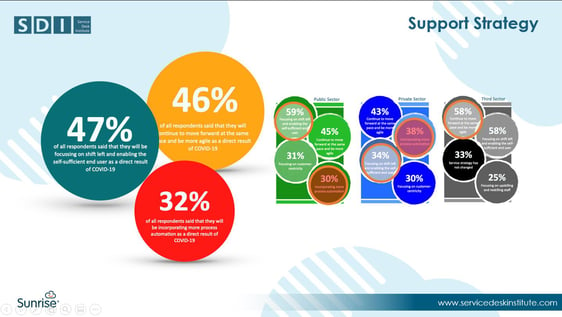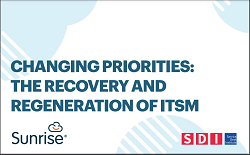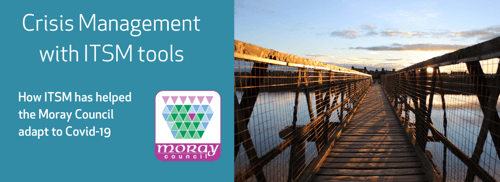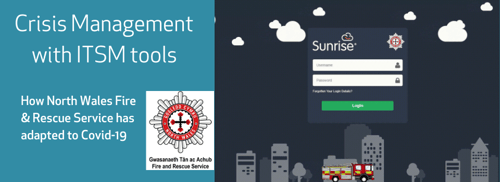Adapting to COVID with ITSM tools. As the COVID-19 crisis runs its course, IT service departments and IT Service Management software have taken the strain of managing the required change in working practices. Enabling the relocation of a working population from an office or field base to a secure an...
Blog
COVID priorities – pandemic drives IT support strategy
15 Oct 2021
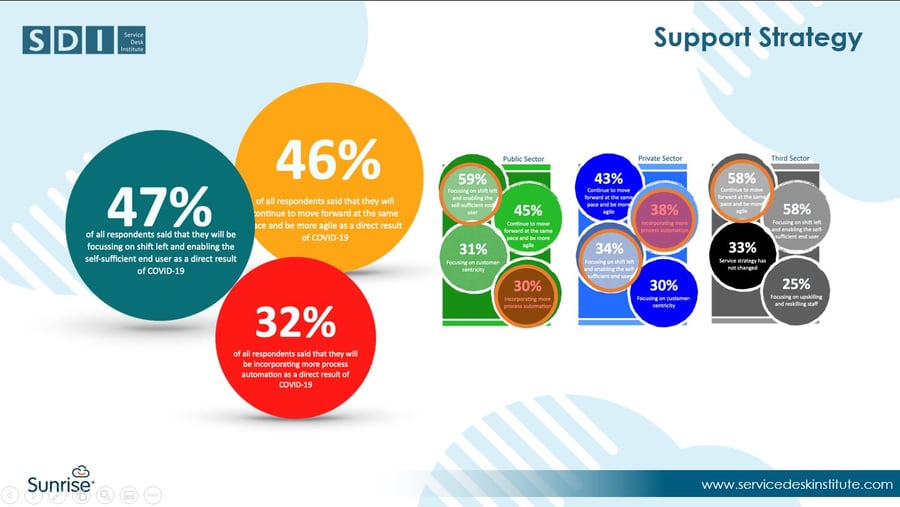
Accelerate, Shift Left, Automate IT Support.
As a direct result of COVID-19, the majority of respondents to a recent SDI survey* said that their main service & support strategy will now focus on shift left and enabling the self-sufficient user along with moving forward at the same pace as realised during the pandemic, being more agile, and automating more processes.
– 47% of all respondents said that they will be focussing on shift left and enabling the self-sufficient end user as a direct result of COVID-19
– 46% of all respondents said that they will continue to move forward at the same pace and be more agile as a direct result of COVID-19
– 32% of all respondents said that they will be incorporating more process automation as a direct result of COVID-19
IT Support Strategy during COVID
Interpreting the survey findings (webinar), we see COVID-19 as a positive driver of change; one could also allude to COVID-19 as an enabler here. We don’t know, however, if the volume of responses would have differed if COVID-19 had not happened. We can certainly see through the qualitative practitioner feedback that for many, COVID-19 has brought positive change and can suggest that without COVID-19, some of that may not have happened, or at the very least, the time to realise the same positive change would have been seen over a longer term.
We can assume that many of these respondents already had, at least in part, some related strategic plans in place pre COVID-19. As a result, the data here is framed to position the assumption that the higher percentage of responses means that any related strategic objectives may not have been in place pre COVID-19, or, did not have the same strategic focus as it now has, post COVID-19. Based on the findings and practitioner feedback, COVID-19 could potentially be viewed as an accelerant for much of what the industry’s leading voices have promoted as good practice for many years, without seeing the surge in take up of those practices that COVID-19 has now influenced.
When we compare respondents’ sectors, we see some difference in priority. All sectors have prioritised being more agile and moving forward at the same pace seen as a result of Covid-19….
We also see Private Sector have prioritised process automation more highly than Public Sector or Third Sector.
And public sector and third are prioritising shift left more highly than private sector.
It’s very interesting to see this difference so clearly evidenced in more than one survey question result.
The results here could pose the questions, is Private Sector generally in a better position to advance and execute automation strategies, if so, why? Or is Public Sector generally behind the curve on or enabling the self-sufficient end user, if so, why? Granted, there is not enough granularity to back up such speculation but the data may raise a few eyebrows.
Other strategic criteria response rates fared less well. The assumption here is that in part, these could have already been part service strategies prior to COVID-19. So although there are some key criteria listed here, including areas such as customer centricity, digital and cloud, it should not necessarily mean that they are less of a strategic focus as a result of COVID-19, and may not have been selected as they are already part of the strategy. What it may mean however, is that the respondents who selected these, may not have had them in their service strategy prior to COVID-19.
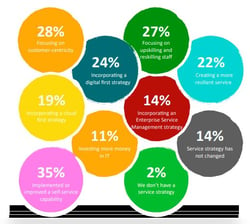
* Read the full SDI survey report “Covid Reshaping IT Support”, Sept. 2021.
Sunrise says that if Covid has taught us one thing, it’s to be prepared.
Plan ahead and have outline and detailed processes in place which are ready to be put into action, making sure that you know your own local capabilities in ‘tweaking’ process to fit outcomes and can move quickly when the time comes. Knowing your capabilities to undertake local configuration is hugely important as is training and awareness of how, when and whether to get your vendor involved in making changes.
‘Shift left’ is a wide concept enabling customer self-service to take pressure off the support team and combined with standard escalation practices in the service desk team, improves customer satisfaction to the levels they expect as a consumer.
Automation is driven by the need for efficiency – the most frequent use cases such as on-boarding new staff have degrees of repetition and complexity of involvement across departmental lines, which are easily streamlined with a drag and drop graphical workflow builder in the ITSM software.
Read the report or watch the webinar discussion of the SDI survey findings on COVID influencing IT Support.
Sunrise would be delighted to discuss your ITSM requirements for automation, self-service, configuration changes and more, contact us.
Related Posts
Blog
,IT Service Management
The world has never been as obviously reliant on technology as it is now, during a pandemic which dictates that we are remote from others, while maintaining high levels of communication. IT Service Management, so often seen as the backroom fixer has leapt to meet the challenge – overnight in so many...
.png)

